




Solar System in Milky Way Galaxy for Kids
What is inside the Milky Way Galaxy? The Milky Way is a Galaxy in which the Solar System and the planet Earth are located. There are around 400 billion stars in our Milky Way Galaxy, and one of these stars is our Sun.
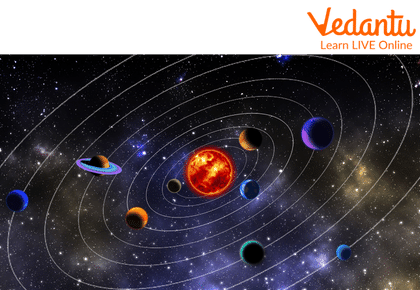
The Solar System in Milky Way Galaxy
It has the shape of spiral with a jumper, and several sleeves extending from the centre and all the stars of the Galaxy revolve around its core. Our Sun is almost on its outskirts and will make a complete revolution in 200 million years. This forms the most famous planetary system for mankind, which is called Solar System.
This includes eight planets and many other space objects formed from a gas-dust cloud about four and a half billion years ago. The Solar System is relatively well studied, but stars and other objects outside it are located at great distances, despite belonging to the same galaxy.
All the stars seen from Earth with the naked eye are in the Milky Way. Don't confuse the galaxy under this name that occurs in the night sky: a bright white stripe crossing the sky. It is a part of our galaxy, a large cluster of stars, which is visible because the earth is near its plane of symmetry.
About the Solar System
A solar system is a group of planets, satellites, meteors and asteroids(there are rocky and metallic bodies that revolve around the sun but are so small that they cannot be called planets) that revolve around the Sun and the Sun in the Milky Way. The Sun and all the celestial bodies in the Solar System are bound to each other by the force of gravity.
Our Sun is located at the centre of the Solar System, and it is also the largest star in the Solar System. There are 8 planets in our solar system: Mercury, Venus, Earth, Mars, Jupiter, Saturn, Uranus, and Neptune. They include 172 known satellites, five dwarf planets and billions of small bodies. Being very small in size, Pluto is counted from the category of the planet to the category of the dwarf planet.
Milky Way Facts for Kids
Our galaxy is round and flat like a plate with spiral arms.
The distance from one end of this galaxy to the other is 1 lakh light years and our solar system is equal to 330 millionth part of our galaxy.
There are around 400 billion stars in our Milky Way Galaxy, and one of these stars is our Sun.
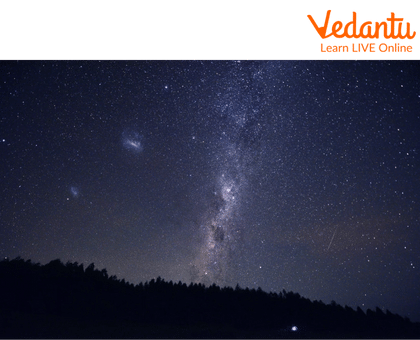
How Many Stars are in the Milky Way?
There is a Giant Black Hole in the centre of our Milky Way. Its mass is equal to 40 million Suns. The force of its gravity is so strong that even a ray of light cannot pass through it; hence the black hole is black because there is no light.
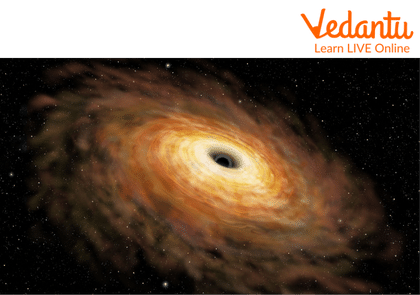
A Giant Black Hole in the Centre of the Milky Way.
It was first discovered by Edwin Hubble. The world's most powerful telescope in space, "Hubble Telescope", has been named after Edwin Hubble.
Like the struggle for survival present on the earth, there is a lot of struggle between the galaxies for their existence in space too. Our Milky Way is slowly swallowing a small galaxy named Sagittarius.
Our galaxy will collide with each other's galaxy in the future. The Andromeda galaxy, which is closest to the Milky Way, is growing closer to the Milky Way. According to scientists' estimates, these two galaxies are coming closer to each other at a speed of 120 km per second.
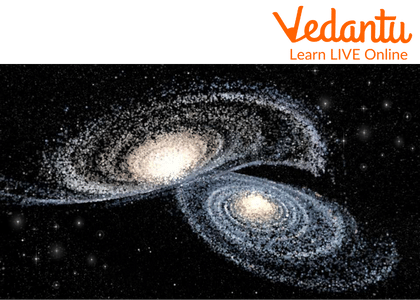
The Milky Way Galaxy is Going to Collide.
Solved Questions
Which galaxy is our Sun part of?
Ans: Our Sun is part of the Milky Way galaxy.
What does the Milky Way look like from Earth?
Ans: The Milky Way looks like a white star stream running north to south.
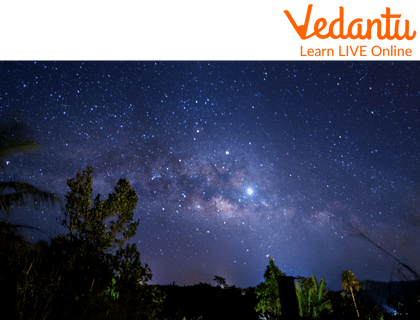
The Milky Way Seen From the Earth.
In which galaxy is our Solar System located?
Ans: Our solar system is located in the Milky Way galaxy.
Learning by Doing
Write True or False.
A massive system of Stars is called a Galaxy.
Our Milky Way is slowly swallowing a small Galaxy named Sagittarius.
The biggest Star in our Solar System is the Moon.
There is a Giant Black Hole in the centre of our Milky Way.
Summary
The Milky Way is a galaxy in which the Solar System and the planet Earth are located. There are around 400 billion stars in our Milky Way galaxy, and one of these stars is our Sun. Our galaxy is round and flat, like a plate with spiral arms. There is a giant black hole in the centre of our Milky Way. Its mass is equal to 40 million suns. All the stars seen from Earth with the naked eye are in the Milky Way. It is a part of our Galaxy.
FAQs on Milky Way Galaxy
1. Can we see our entire galaxy?
No. since we are part of it and are located in its outer expanse, so it is not possible to see the whole Galaxy. This is because we are just a part of it and located at the outer expense. Also, for us to be able to see the galaxy light needs to reach us from the further parts of the galaxy and it has not been much time since the formation of the galaxy that light from all parts of the galaxy would be able to reach us, the universe is continuously expanding.
2. How many solar systems are in the Milky Way galaxy?
The number of solar systems in the entire Milky Way galaxy is one just our solar system. That sounds a little bit untrue because there are maybe more than billions of stars in the milky way galaxy and a lot of them have a system of planets (known as planetary system) revolving around them, but we need to note that only our planetary system with the sun being its centre has been officially named as the solar system. We don't use the term solar system to define all the other planetary systems in the Milky Way galaxy.
3. Why does the earth revolve around the sun?
It's a basic law of gravity that everything in the universe attracts every other thing in the universe with some force known as gravitational force. All the planets in the solar system revolve around the sun because the sun is the heaviest and largest celestial object in our solar system and its gravity influences all the other planets in our solar system keeping them in their orbit. It's not that only the sun makes planets revolve around it; every smaller object is influenced by the force of gravity of the larger object near it, for example, our moon Luna revolves around Earth. Two moons of Mars Phobos and Demos revolve around Mars.









